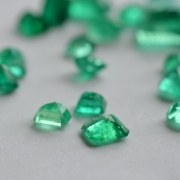The last wonderland for LPG and condensate exporters
The world of those who trade liquefied gasses and light condensate products is in turmoil. At last, the ripples of the US shale revolution are hitting the refinery products markets. And they leave no stone unturned just as shale has already made billion-dollar LNG projects go up in flames.
LPG prices worldwide go down and there is no bottom in sight for this development as a flood of new production is poised to drown the market in hydrocarbon products taking prices downhill. The only thing shoring the fragile equilibrium up is the current lack of shipping capacity that could bring that deluge to a market that pays a dime. But shipyards are busy correcting this shortfall as order books for new vessels are full to the brim.
To all those who need stable market outlets and relatively high prices, this must look like hell (or at least like purgatory), and by looking at the world map one has the impression that the whole planet is irremediably infected by the disease. There seems to be no escape.
However, there is one world region that has largely been left untouched by all this – Sub-Saharan Africa.
Take a look at the map of international energy trades and transport and you will see why the African continent, and especially the portion below the Sahara, is called an energy black hole. The region features a large black blotch in the lower center of the image. And taking a look at the total energy consumption figures immediately tells us why. Africans are still relative minnows as compared to energy-hungry Europeans, Americans, or Asians. Even South America features quite some dense spots of activity.
But Africa is dark. However, many Sub-Saharan African countries feature among some of the strongest growing economies in the world and the continent is THE big hope for the White House. President Obama recently hosted a meeting of African leaders in Washington and said that now it’s Africa’s turn. Never before, African leaders had received so much attention.
Those bristling economies also need a lot of energy to build and sustain their strong growth but this poses them with a dilemma. Energy import infrastructure in this part of the world is either nonexistent tiny or otherwise extremely insufficient.
Let’s take a look at the southernmost tip of the continent – the Republic of South Africa or RSA. The days of Apartheid are long gone but to those looking a bit harder, its heritage is still being felt across the country. Under Apartheid, South Africa has been an isolated country that has put value on the notion of self-sufficiency. They often had no choice as multiple embargos disconnected the RSA from much of the rest of the world.
This is why the country has never really developed big-style energy import infrastructure. They lived on whatever their refineries could produce in terms of LPG or condensate from either imported crude or from the whimsical domestic reserves they had. By the way – the real reason why Sasol is big in GTL is not because they wanted to be very innovative but rather because they needed more diesel and Fischer-Tropsch, however, expensive and inefficient it was, was the only way to convert the little Natural Gas that could be found. Also, as they have some of the largest coal reserves in the world they built their entire electricity production portfolio around coal plants. Not a green darling.
The RSA has looked into the possibility of LNG terminals but everyone who knows the intricacies of LNG will not be surprised that it has not worked out so far.
However, more than 20 years after Apartheid, LPG import terminals into the RSA are also still a joke. None of the existing ones can receive anything but very small vessels as their storage tanks are puny. They need to build everything from scratch. And the situation in neighboring countries is not much more enticing. Hard, to organize fuel imports in such a situation.
The RSA is also the largest economy in the entire SADC region. In a more normal world, the countries around the RSA could have looked at it as some sort of regional locomotive that pulls all the others along. But Apartheid prevented all this which is also one very important reason for the emergence of the Black Hole.
To make matters worse it took the RSA a long time even when Apartheid was gone to become normal. Past leaders of the country had to put an onus on stability so real economic liberalization and development were not prominent on their agendas. It almost looks like President Zuma is the first leader who fancies some more normal economic growth and development. The RSA has become a normal country. The giant South African corporations stand back to allow new businesses to pick up the tab. Private entrepreneurialism is fancied and encouraged. The entire region takes note.
The entire SADC region plus a lot of Western and Central African countries are one giant hotspot for economic activity so energy will have to be imported. Those countries also start to put a premium on environmental protection so the share of fuels such as LPG must rise – as it does already now. LPG is an extremely important cooking fuel for the continent and is also important for small-scale power production.
Africa is the continent of the household generator. Electricity grids are nonexistent or failing and blackouts are a common feature in many countries (although not so much in the RSA). No African would ever trust his electricity supply in some kind of utility so they all have gensets at home. The bigger ones run on diesel but the small stuff runs on either gasoline or on LPG. And as it burns relatively cleanly, it’s also the heating fuel of choice. Winters in Africa can be on the chilly side.
How does all this help the worried LPG and condensates exporter? It is going to take time to develop the African market. Terminals will have to be built, supply lines will have to be created and maintained, and customers will have to be tied into long-term arrangements they can live with. It’s the last market in development for light fuels on earth and suppliers would be well advised to take notice.
Whoever saw the movie “Blood Diamond” will know Leonardo di Caprio’s phrase “TIA – This Is Africa”. This is a land of many challenges and it’s the ultimate frontier for the battle-hardened business developer and entrepreneur. This is the domain of private companies that take on the big but not insurmountable challenge of building a market from scratch.
It does not necessarily require long-term partnerships with established suppliers but such a partnership would sure help if it is established on fair principles. Any supplier getting exposure to this great new market right now, any supplier who is willing and able to go through the stony hills to reach the fertile plains, any such supplier will have done what any good supplier of anything must do to thrive and prosper. He would have built a foundation for the future with what he has in the present.
Any supplier of LPG and condensates who skips this rare opportunity has only himself to blame.


















Leave a Reply
Want to join the discussion?Feel free to contribute!